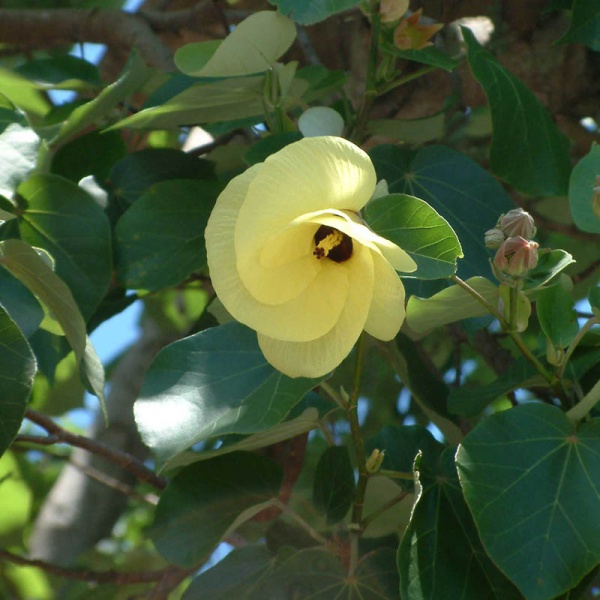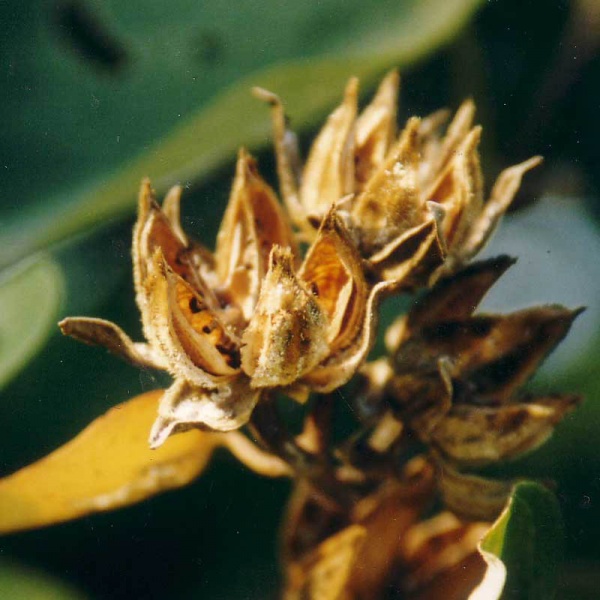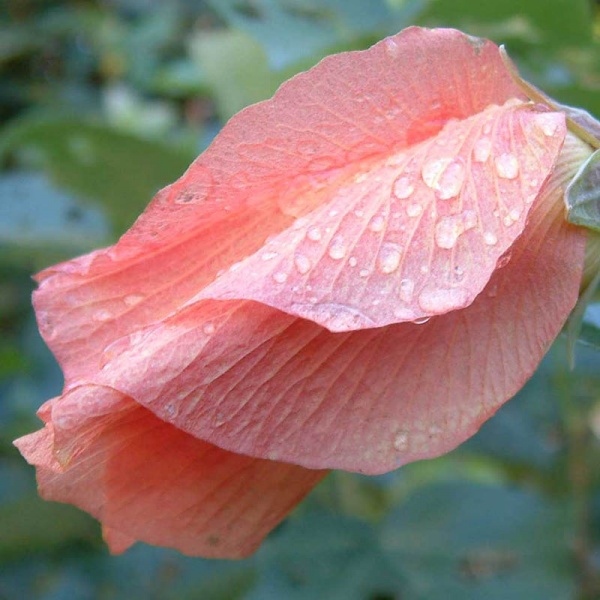Scientific Name: Hibiscus tiliaceus
-
Pronunciation:hee-BIS-cus till-ee-ACE-ee-us
-
Common Name:Cottonwood, Cotton Tree




-
Derivation:Hibiscus: L. for the marsh mallow |tiliaceus: leaves resemble Linden Tree (Tilia europa)
-
Type:
-
Family:MALVACEAE
-
Flowers:November to February yellow fading to pink
-
Fruit:Brownish capsules to 2 cm long spliting in 4-5
-
Vegetation Type:Tidal Wetland. seacoast,
-
Species List:Plants for Coastal Gardens, Hedges, Bush medicine, NLTalks2010, Biosphere Day Noosa Woods, Boreen Point Caravan Park, Mill Point, Mangrove, Johns, Cooroibah Conservation Park, Cooroibah Bushland Reserve, Batianoff 87, BHNR Lake Cooroibah West, Regional Ecosystem 12.1.3.
Cultural Notes
TAKE CARE! Some information about bush foods and medicines may be anecdotal. Correct identification and preparation is essential:
Fishing nets and rope made from inner bark
Wood used for fire and shield making
Bush Medicine: used in herbal medicine.
Inner bark used for making dilly bags, fishing lines and nets.
Bark sucked and fibre used for fishing and dillybags.
Identification Notes
Pair of broad stipules to 3 cm at leaf node ||Leaves: Star hairs present on leaves||
Landscaping Notes
Noosa Council Preferred Species list. ||Bushy tree for average to well-drained situation. Hardy near seaside. Excellent shade tree. ||Prune to form compact hedge, screen.||Propagation is from seed, ripening in winter and germinating easily; and from cuttings, which strike easily. Prefers sunny position and reasonable drainage.||Successfully propagated by Coolum Community Native Nursery.|Successfully propagated by Tin Can Bay City Farm Nursery.| Successfully propagated by Florabunda Bushcare nursery, Woombye||


